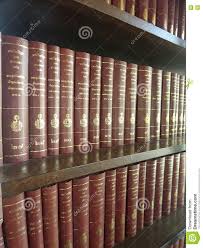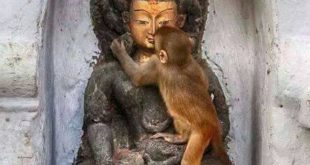Tipiṭaka – Buddhist scriptures are essentially different from the scriptures of all other religions in that they do not claim divine inspiration or superhuman intervention of any kind, but are, by their own admission, the product of pure human insightfulness.
The first Buddhist Councils took place three months after the death of the Buddha around 400 BCE and was made up of five hundred Arahants who, with Kassapa as their chosen leader,recited the precepts and discourses of the Buddha and took the first steps towards a methodical arrangement in two collections: (1) Vinaya — the disciplinary rules for the Sangha; and (2) the Dhamma — the ethical and doctrinal teachings of the Buddha. Western scholarship has suggested that the (3) Abhidhamma Pitaka was likely composed starting after 300 BCE because of differences in language and content from other Sutta literature. However, oral tradition maintained by the Atthakathā-teachers describe the six canons of Abhidhamma Pitaka, one of its Matika, and the ancient Atthakathā as also included at the first Buddhist council in Sutta category, but its literature is different from Sutta because Abhidhamma Pitaka was authored by Sāriputta
A 2nd council was held somewhere around 350 BCE, consisting of seven hundred members. At this council, the principles of the orthodox faction prevailed, the deviations from the disciplinary rules were prohibited, and the disciplinary rules and doctrines were again recited in the unaltered form and vindicated. However, the decisions of this council were not accepted by everyone, and the first open schism after the death of the Buddha occurred. Thus began the history of differing and antagonistic schools and sects.
A 3rd council was held at Pāṭaliputta somewhere around 240 BCE, under the patronage of the great Indian ruler Asoka, also known as Dhammāsoka, the grandson of Chandragupta. This council consisted of a thousand members and, like the second council, was convened to settle disagreements among members of the Sangha. At this council, the disciplinary rules and the doctrines were again recited and, for the more conservative Theravādin School, definitively fixed.
By the time of the 4th councils, Buddhism had long since splintered into different schools. The Theravada had a 4th Council in the first century BCE in Tambapanni, i.e. Sri Lanka, at Aloka Lena now Alu Vihara during the time of King Vattagamani-Abaya. However it should be clarified that an anonymous local chieftain had given patronage and not the king, since he was a firm follower of the Abayagir school (a Mahayana Sect.). In fact one of the main reasons for the Council was the cruel policy the king held against the Mahavihara Priests who were Theravadians who were once attacked at the Mahavihara Premises killing many and driving away the others. The temple was destroyed and in its place a Mahayana Temple was built. The other main reasons for the Council were the unstable political situation within the country due to constant invasions which lead the king himself to flee several times and also severe famine. It is said to have been devoted to committing the entire Pali Canon to writing, which had previously been preserved by memory. No mention had been made as to who led this Council, for which the approximate cause would have been the deteriorating status of Buddhism then, and the collective effort by the priesthood to preserve the religion in its purest form therefore not needing a leader(only the fact that the Mahavihara priesthood i.e. Theravada school took part in this recital and compilation had been mentioned).
Another Fourth Buddhist Council was held in the Sarvastivada tradition, said to have been convened by the Kushan emperor Kanishka, in 78 AD at Kundalban in Kashmir. It is said that Kanishka gathered five hundred Bhikkhus in Kashmir, headed by Vasumitra, to systematize the Sarvastivadin Abhidharma texts, which were translated from earlier Prakrit vernacular languages (such as Gandhari in Kharosthi script) into the classical language of Sanskrit. It is said that during the council three hundred thousand verses and over nine million statements were compiled, a process which took twelve years to complete. Although the Sarvastivada are no longer extant as an independent school, its traditions were inherited by the Mahayana tradition. The late Professor Etienne Lamotte, an eminent Buddhologist, held that Kanishka’s Council was fictitious. However, David Snellgrove, another eminent Buddhologist, considers the Theravada account of the Third Council and the Sarvastivada account of the Fourth Council “equally tendentious,” illustrating the uncertain veracity of much of these histories.
5th Council: Another Buddhist Council, this time presided by Theravada monks took place in Mandalay, Burma, in 1871 in the reign of King Mindon. The chief objective of this meeting was to recite all the teachings of the Buddha and examine them in minute detail to see if any of them had been altered, distorted or dropped. It was presided over by three Elders, the Venerable Mahathera Jagarabhivamsa, the Venerable Narindabhidhaja, and the Venerable Mahathera Sumangalasami in the company of some two thousand four hundred monks (2,400). Their joint Dhamma recitation lasted for five months. It was also the work of this council to approve the entire Tripitakainscribed for posterity on seven hundred and twenty-nine marble slabs in the Burmese script before its recitation. This monumental task was done by the monks and many skilled craftsmen who upon completion of each slab had them housed in beautiful miniature ‘pitaka’ pagodas on a special site in the grounds of King Mindon’s Kuthodaw Pagoda at the foot of Mandalay Hill where it and the so-called ‘largest book in the world’, stands to this day.
The Sixth Council was called at Kaba Aye in Yangon (formerly Rangoon) in 1954, 83 years after the fifth one was held in Mandalay. It was sponsored by the Burmese Government led by the then Prime Minister, the Honourable U Nu. He authorized the construction of the Maha Passana Guha, the “great cave”, an artificial cave very much like India’s Sattapanni Cave where the first Buddhist Council had been held. Upon its completion The Council met on 17 May 1954.
As in the case of the preceding councils, its first objective was to affirm and preserve the genuine Dhamma and Vinaya. However it was unique insofar as the monks who took part in it came from eight countries. These two thousand five hundred learned Theravada monks came from Myanmar, Thailand, Cambodia, Laos, Vietnam, Sri Lanka, India, and Nepal. Germany can only be counted as the nationality of the only two western monks in attendance: Venerable Nyanatiloka Mahathera and Venerable Nyanaponika Thera. They both were invited from Sri Lanka. The late Venerable Mahasi Sayadaw was appointed the noble task of asking the required questions about the Dhamma of the Venerable Bhadanta Vicittasarabhivamsa who answered all of them learnedly and satisfactorily. By the time this council met all the participating countries had had the Pali Tripiṭaka rendered into their native scripts, with the exception of India.
The traditional recitation of the Buddhist Scriptures took two years and the Tripiṭaka and its allied literature in all the scripts were painstakingly examined and their differences noted down and the necessary corrections made and all the versions were then collated. It was found that there was not much difference in the content of any of the texts. Finally, after the Council had officially approved them, all of the books of the Tipitaka and their commentaries were prepared for printing on modern presses and published in the Burmese script. This notable achievement was made possible through the dedicated efforts of the two thousand five hundred monks and numerous lay people. Their work came to an end on the evening of Vesak, 24 May 1956, exactly two and a half millennia after Buddha’s Parinibbana, according to the traditional Theravada dating.
The Pāḷi Piṭakas, therefore, may safely be accepted as a reliable — of all the Buddhist scriptures thus far known, certainly the most reliable — source of information about the original teachings which the Buddha Himself promulgated.
 NEWS.NIRBANKAMI.COM NEWS.NIRBANKAMI.COM
NEWS.NIRBANKAMI.COM NEWS.NIRBANKAMI.COM


